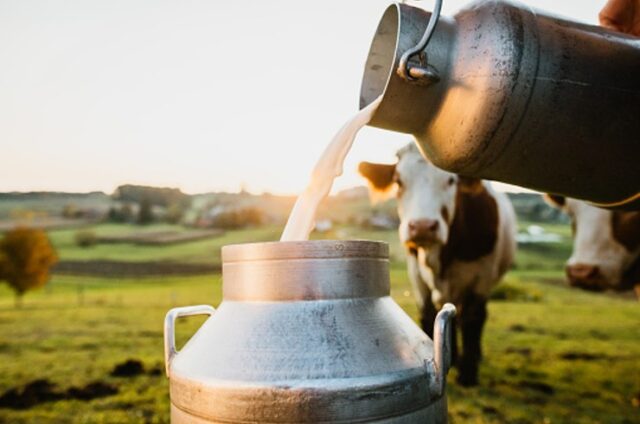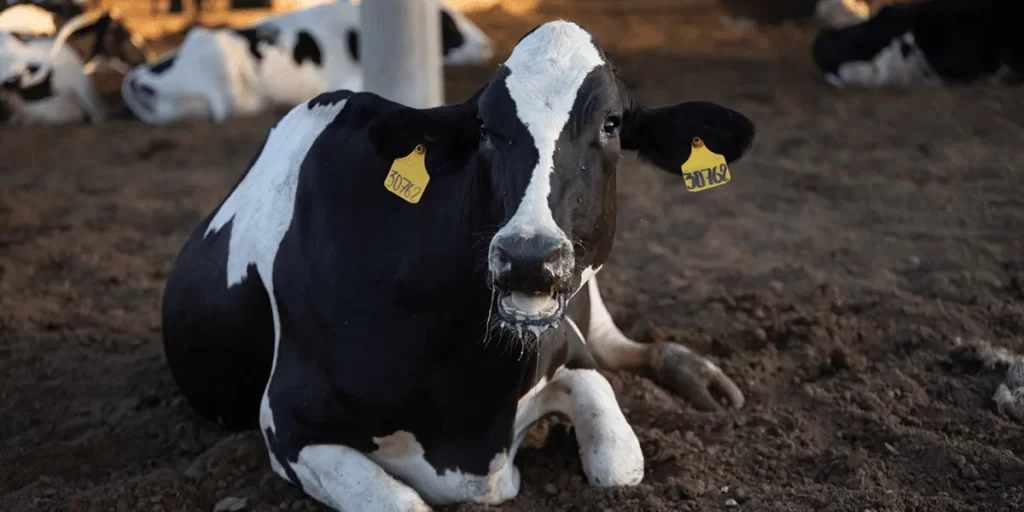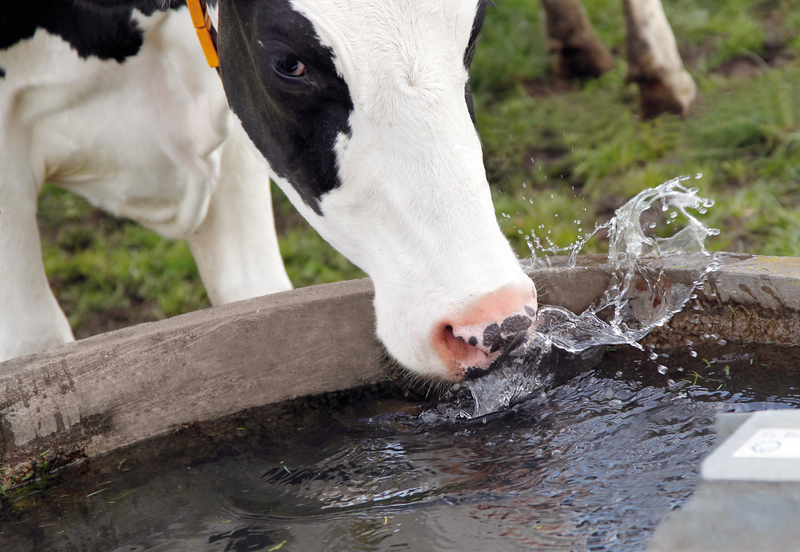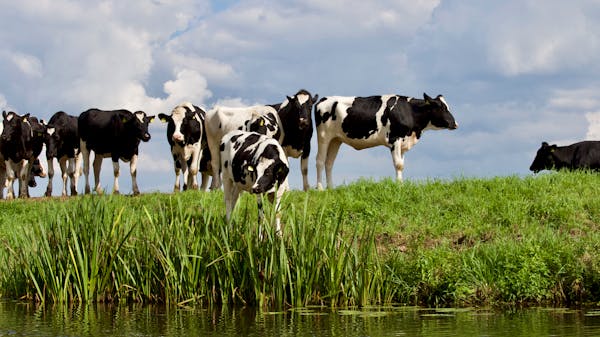
Impact of Heat Stress on Milk Production & Quality
Introduction
Heat stress is a significant challenge in dairy farming, particularly in regions experiencing rising temperatures due to climate change. High temperatures, combined with humidity, create stressful conditions for dairy cows, affecting their health, milk production, and overall productivity. Heat stress leads to increased body temperature, changes in metabolism, and decreased feed efficiency, which all contribute to reduced milk yield and deteriorated milk quality. This article explores how heat stress impacts milk yield and quality, the physiological effects on cows, and strategies to mitigate its adverse effects.
Understanding Heat Stress in Dairy Cattle

Heat stress occurs when cows are unable to regulate their body temperature efficiently due to excessive environmental heat. Unlike humans, cows rely primarily on respiration and limited sweating to cool themselves. When ambient temperatures exceed the cow’s comfort zone (between 5°C and 25°C), it struggles to dissipate heat, leading to physiological stress.
Cows experiencing heat stress show signs such as excessive panting, reduced movement, increased water intake, and decreased feed intake. If left unmanaged, prolonged heat stress can lead to long-term damage, including reproductive issues, compromised immune function, and increased susceptibility to diseases.
Effects of Heat Stress on Milk Production
Heat stress negatively impacts milk production due to several physiological and behavioral changes in cows:
1. Reduced Feed Intake
One of the first responses to heat stress is a drop in feed intake. Cows eat less to reduce metabolic heat production, leading to:
- Lower energy availability for milk synthesis
- Decreased body condition, affecting lactation cycles
- Altered rumen function, which reduces digestion efficiency and nutrient absorption
The impact of reduced feed intake becomes more severe during prolonged heatwaves, leading to significant losses in milk production. Additionally, poor feed efficiency results in reduced microbial protein synthesis, which is crucial for maintaining milk yield.
2. Hormonal and Metabolic Changes
Heat stress triggers hormonal imbalances, leading to:
- Increased cortisol levels, which suppress appetite and increase stress responses
- Altered insulin function, affecting glucose metabolism critical for milk synthesis
- Disruptions in reproductive hormones, leading to poor fertility rates and irregular estrous cycles
Furthermore, heat-stressed cows experience an increase in plasma urea nitrogen (PUN) levels, which negatively impacts protein metabolism. The shift in metabolic pathways to manage heat stress results in reduced milk output and composition changes.
3. Increased Water Requirements

Cows drink more water under heat stress to compensate for fluid loss through sweating and panting. However, inadequate hydration can still lead to dehydration, further impacting metabolic efficiency and reducing milk yield. Increased water consumption also leads to more urination, which may contribute to mineral imbalances and electrolyte depletion.
4. Impaired Mammary Gland Function
Studies indicate that heat stress negatively affects the function of the mammary gland, resulting in:
- Reduced synthesis of lactose, fat, and protein, which are critical components of milk
- Altered milk composition, including lower casein levels essential for dairy processing
- Decreased activity of mammary epithelial cells, leading to lower milk production
Prolonged heat stress damages mammary tissue, reducing overall lactation efficiency and shortening the productive lifespan of dairy cows.
Effects of Heat Stress on Milk Quality
Apart from reducing quantity, heat stress also deteriorates milk quality, affecting its composition and market value.
1. Lower Fat and Protein Content
- Heat stress alters lipid metabolism, leading to lower butterfat percentage, which affects dairy product yield
- Reduced casein and whey protein levels affect cheese yield and milk processing efficiency
- A decline in milk solids results in lower revenue for dairy farmers and reduced consumer acceptance
2. Increased Somatic Cell Count (SCC) and Mastitis Risk
Heat stress weakens the immune system, making cows more prone to infections such as mastitis. This leads to:
- Elevated somatic cell count (SCC), an indicator of milk quality and udder health
- Increased antibiotic use, which can affect milk safety regulations and result in milk rejection by processing plants
- Higher risks of bacterial contamination, leading to reduced shelf life of dairy products
3. Changes in Milk Composition
- Higher pH levels can cause milk spoilage faster, leading to increased rejection rates at dairy processing plants
- Increased oxidative stress leads to off-flavors, reducing consumer acceptability
- Decreased lactose content affects taste, texture, and processing capabilities for dairy products like yogurt and cheese
Mitigation Strategies for Heat Stress in Dairy Farming
To maintain milk production and quality, farmers must adopt proactive management strategies to combat heat stress.
1. Cooling Systems for Cows
- Shade and Ventilation: Providing natural shade and installing fans in barns improves airflow and prevents overheating.
- Sprinklers and Misting Systems: Cooling cows with water through sprinkler systems reduces body temperature and stress levels.
- Tunnel and Cross Ventilation: Proper barn design with effective airflow prevents heat buildup and improves cow comfort.
- Cooling Pads and Foggers: Advanced cooling technologies help maintain optimum body temperature in cows.
2. Optimized Feeding Strategies
- Feeding during cooler parts of the day to maximize intake
- Providing high-energy, nutrient-dense diets to compensate for reduced feed intake
- Including buffers and yeast cultures in feed to maintain rumen function and digestion efficiency
- Adding essential vitamins and minerals, such as sodium bicarbonate and potassium, to help maintain electrolyte balance
3. Hydration Management
- Ensuring clean, cool, and adequate water supply throughout the farm
- Using electrolytes and mineral supplements to prevent dehydration and maintain metabolic function
- Encouraging frequent water intake by strategically placing water troughs near resting and feeding areas
4. Genetic and Breeding Solutions
- Selecting heat-resistant breeds or crossbreeding for better adaptability
- Researching genetic markers associated with thermotolerance to develop resilient dairy cows
- Improving breeding programs to focus on cows with superior heat tolerance and milk production traits
5. Farm Infrastructure Adaptations
- Designing heat-reflective roofing for barns to minimize heat absorption
- Using automated monitoring systems to track heat stress levels in real time
- Implementing rotational grazing practices to prevent overgrazing and maintain cool pastures
Conclusion
Heat stress poses a serious threat to dairy farming, reducing milk yield and deteriorating milk quality. However, with strategic interventions, such as improved cooling systems, optimized feeding, proper hydration, and genetic selection, farmers can mitigate its adverse effects. As climate conditions continue to evolve, proactive heat stress management will be key to ensuring sustainable dairy production and maintaining high milk quality in the future. By investing in innovative solutions and adopting best practices, dairy farmers can protect their herds and ensure consistent milk production despite challenging environmental conditions.




















